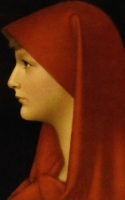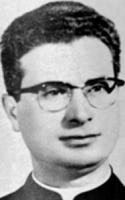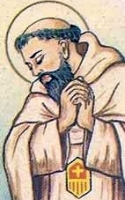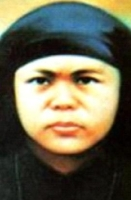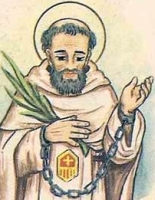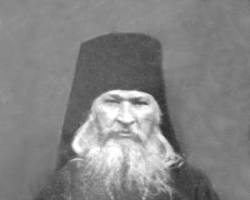St. Maximus
Feastday: December 27
Death: 282
Patriarch of Alexandria, Egypt, administering the patriarchate while St. Dionysius was in exile and then succeeding him. Reportedly, he drove the heretical bishop of Antioch, Paul of Samosata, out of Egypt.
Life
Little is known of the life of Bishop Maximus. He was priest in Alexandria, Egypt who administered the see of Alexandria while Bp. Dionysius, his predecessor, was in exile during persecutions.
Maximus was elected to the cathedra of Alexandria after the death of Bp. Dionysius. He participated in the Synod of Antioch that condemned the teachings of Paul Samosata who was then the Bishop of Antioch. Bp. Maximus reposed in 282 of natural causes.
Saint John the Apostle
திருத்தூதர் புனிதர் யோவான்
இயேசுவின் அன்பு சீடர், நற்செய்தியாளர், திருத்தூதர்:
பிறப்பு: கி.பி. 6
பெத்சாய்தா, கலிலேயா, ரோமப் பேரரசு
இறப்பு: கி.பி. 100
பட்மோஸ், கிரேக்கம், ரோமப் பேரரசு
ஏற்கும் சபை/ சமயம்: அனைத்து கிறிஸ்தவ பிரிவுகளும்
நினைவுத் திருவிழா: டிசம்பர் 27
சித்தரிக்கப்படும் வகை:
புத்தகம், கழுகு, இரசக் கிண்ணம்
பாதுகாவல்:
அன்பு, விசுவாசம், நட்பு, ஆசிரியர்கள், புத்தக விற்பனையாளர்கள், தீயால் சுடப்பட்டவர்கள், விஷத்தால் பாதிக்கப்பட்டவர்கள், கலை-முகவர்கள், ஆசிரியர்கள், வெளியீட்டாளர்கள், எழுத்தாளர்கள், தேர்வுகள், அறிஞர்கள், இறையியலாளர்கள்
புனிதர் யோவான் அல்லது புனிதர் அருளப்பர் இயேசு கிறிஸ்துவின் பன்னிரு திருத்தூதர்களில் ஒருவர். இவர் இயேசுவின் அன்பு சீடர் ஆவார். கிறிஸ்தியல் கொள்கைகளைக் கொண்ட யோவான் நற்செய்தியை இவர்தான் எழுதினார் என்று பாரம்பரியமாக நம்பப்படுகிறது. இவர் கிறிஸ்தவ திருச்சபையின் தொடக்க காலத்தில் இருந்தே புனிதராக போற்றப்படுகிறார்.
புனிதரின் வாழ்வு:
புனிதர் யோவான் கலிலேயாவைச் சார்ந்தவர்.
இவரது தந்தை பெயர் “செபதேயு” (Zebedee). தாயாரின் பெயர், “சலோமி” (Salome) ஆகும். இயேசுவின் திருத்தூதர்களுள் ஒருவரான பெரிய “யாக்கோபு” (James) இவரது சகோதரர் ஆவார். இவர்கள் மீன் பிடிக்கும் தொழிலை மேற்கொண்டிருந்தனர். முதலில் “திருமுழுக்கு யோவானின்” (John the Baptist) சீடராக இருந்த யோவான், அவரது வழிகாட்டுதலின்படி இயேசுவைப் பின்பற்றினார். இயேசு தனது பன்னிரு திருத்தூதர்களில் ஒருவராக இவரை ஏற்றுக்கொண்டார்.
இயேசு யோவானையும், அவர் சகோதரர் யாக்கோபையும் “இடியின் மக்கள்” ("Boanerges" - "Sons of thunder") என்று அழைத்தார். திருத்தூதர்களிலேயே மிகவும் இளையவராக யோவான் இருந்தார். எனவே, இயேசு இவரை மிகவும் அன்பு செய்தார்.
இயேசுவின் உருமாற்றம் (மத்தேயு நற்செய்தி 17:1) உள்ளிட்ட முக்கிய நிகழ்வுகளில் உடனிருந்த மூன்று திருத்தூதர்களுள் யோவானும் ஒருவர்.
இறுதி இரவுணவின்போது, இவர் இயேசுவின் மார்பில் சாய்ந்திருந்ததாக யோவான் நற்செய்தி குறிப்பிடுகிறது. இயேசு திருப்பாடுகளின்போது, இவர் தைரியமாக அவரைப் பின்தொடர்ந்து சென்று சிலுவை அடியில் நின்றார். அதன் விளைவாக, தனது தாய் மரியாளைப் பாதுகாக்கும் பொறுப்பை இயேசு, யோவானிடம் அளித்தார்.
இயேசுவின் விண்ணேற்றத்திற்கு பிறகு, திருத்தூதர் பேதுருவோடு இணைந்து சிறிது காலம் எருசலேமில் நற்செய்தி அறிவித்த யோவான், மரியாளின் விண்ணேற்புக்கு பின்னர் “எபேசஸ்” (Ephesus) நகருக்கு சென்று போதித்தார் என்று நம்பப்படுகிறது.
கிறிஸ்த துன்புறுத்தல்களுக்கு பேர்போன பேரரசன் “டொமீஷியன்” (Emperor Domitian) ஆண்ட முதலாம் நூற்றாண்டின் இறுதியில், ஆதி கிறிஸ்தவ எழுத்தாளரும், “இலத்தீன் கிறிஸ்தவத்தின் தந்தை” (The Father of Latin Christianity) என்றழைக்கப்படும் “தெர்துல்லியன்” (Tertullian) என்பவரின் கூற்றின்படி, கொதிக்கும் எண்ணெய் கொப்பரையில் போடப்பட்டும், இவர் யாதொரு தீங்குமின்றி உயிர் பிழைத்ததாக கூறப்படுகிறது. இந்த அற்புத நிகழ்வை நேரில் கண்ட “கொலோஸ்ஸிய” (Colosseum) பார்வையாளர்கள் அனைவரும், கிறிஸ்தவத்திற்கு மனம் மாறினர். அதன்பின் “கிரேக்க பட்மொஸ்” தீவுக்கு (Greek island of Patmos) நாடு கடத்தப்பட்ட யோவான், அங்கேயே மரணம் அடைந்தார்.
யோவானின் திருப்பண்டங்கள் எதுவும் கிடைக்காததால், இவரும் உடலோடு விண்ணகத்திற்கு எடுத்துக்கொள்ளப்பட்டிருக்கலாம் என்று ஒரு நம்பிக்கை நிலவுகிறது.
இஸ்லாமிய பார்வை:
இஸ்லாமியர்களின் புனித நூலான “கொரான்” (Quran), இயேசுவின் சீடர்களைப் பற்றி பேசுகிறது. ஆனால், எவரது பெயரும் குறிப்பிடப்படவில்லை. முஸ்லிம் விளக்கங்கள், மற்றும் புனித கொரான் விளக்கவுரைகள் அவர்களின் பெயர்களை குறிப்பிடுவதுடன், யோவானின் பெயரையும் குறிப்பிடுகிறது. “அந்தியோக்கியாவுக்கு” (Antioch) நற்செய்தி அறிவிக்கச் சென்ற மூன்று அப்போஸ்தலர்களில் யோவானும் ஒருவர் என்று, ஆதிகால இஸ்லாமிய மரபு கூறுகிறது.
Also known as
• Apostle of Charity
• Beloved Apostle
• Beloved Disciple
• Giovanni Evangelista
• John the Divine
• John the Evangelist
• John the Theologian
Additional Memorials
• 8 May (Greek Orthodox)
• 6 May (before the Latin gate)
Profile
Son of Zebedee and Salome. Fisherman. Brother of Saint James the Greater, and called one of the Sons of Thunder. Disciple of Saint John the Baptist. Friend of Saint Peter the Apostle. Called by Jesus during the first year of His ministry, and traveled everywhere with Him, becoming so close as to be known as the beloved disciple. Took part in the Last Supper. The only one of the Twelve not to forsake the Saviour in the hour of His Passion, standing at the foot of the cross. Made guardian of Our Lady by Jesus, and he took her into his home. Upon hearing of the Resurrection, he was the first to reach the tomb; when he met the risen Lord at the lake of Tiberias, he was the first to recognize Him.
During the era of the new Church, he worked in Jerusalem and at Ephesus. During Jesus' ministry, he tried to block a Samaritan from their group, but Jesus explained the open nature of the new Way, and he worked on that principle to found churches in Asia Minor and baptizing converts in Samaria. Imprisoned with Peter for preaching after Pentecost. Wrote the fourth Gospel, three Epistles, and possibly the Book of Revelation. Survived all his fellow apostles.
Traditional stories:
• Emperor Dometian had him brought to Rome, beaten, poisoned, and thrown into a cauldron of boiling oil, but he stepped out unharmed and was banished to Patmos instead. This is commemorated by the feast of Saint John before the Latin Gate.
• When John was en route to preach in Asia, his ship was wrecked in a storm; all but John were cast ashore. John was assumed dead, but two weeks later the waves cast him ashore alive at the feet of his disciple Prochoros.
• When John denounced idol worship as demonic, followers of Artemis stoned him; the rocks turned and hit the throwers.
• He prayed in a temple of Artemis; fire from heaven killed 200 men who worshipped the idol. When the remaining group begged for mercy, he raised the 200 from the dead; they all converted and were baptized.
• Drove out a demon who had lived in a pagan temple for 249 years.
• Aboard ship, he purified vessels of sea water for drinking.
• Ceonops, a magician, pretended to bring three dead people come to life; the "people" were actually demons who mimicked people so the magician could turn people away from Christ. Through prayer, John caused the magician to drown and the demons to vanish.
• Once a year his grave gave off a fragrant dust that cured the sick.
Died
• c.101 at Ephesus (in modern Turkey)
• a church was built over his tomb, which was later converted to a mosque
Blessed Sára Salkaházi
Also known as
Sára Schalkház
Profile
Second of three children born to Leopold and Klotild Salkahaz, hotel owners. Her father died when Sara was two. Her brother described her as "a tomboy with a strong will and a mind of her own; when it came to play she would always join the boys in their games or tug of war". She began writing plays as a teenager, and at the same time developed a deep prayer life. She received a degree and taught elementary school for a year, but gave it up to work as a bookbinder. She began writing again, and was active in the Hungarian literary world. Journalist. Member of the leadership of the National Christian Socialist Party of Czechoslovakia, and editor of the Party newspaper.
Sara was engaged to be married, but broke it off when she realized a call to a different life. Joined the Sisters of Social Service in 1929, making her vows in 1930. Worked at the Catholic Charities Office in Kosice, Slovakia. Supervised charity efforts, taught religion, lectured, continued to write, and she organized groups of lay women to help with the Church's social work. Organized a national Catholic Women's Association. Sara worked herself to complete exhaustion; seeing this, her supervisors refused to allow her to take her final vows in the Sisters. However, Sara lived the rest of her life with self-imposed restrictions as though she had taken vows.
In 1941 she was assigned to be national director of the Hungarian Catholic Working Women's Movement which had about 10,000 members across the country, and edited its magazine. Wrote against Nazism. She continued her social work with the poor and the displaced, and started hostels to provide safe housing for working single women, and as a place to hide Jews and others being sought by the Nazis. Started vocational schools, leadership classes for working lay people, and retreat centers for them. On 27 December 1944 Nazis surround the Working Women's Hostel, 4 Bokréta-Street, Budapest, looking for Jews. When Sára arrived, she immediately introduced herself as being in charge of the house. She and five others were taken by the Nazis to the Danube, stripped naked, and murdered; the Sisters saved more than 1,000 people.
Born
11 May 1899 in Kassa, Hungary (modern Košice, Slovakia)
Died
• shot on 27 December 1944 by members of the Arrow Cross Party on the banks of the River Danube in Budapest, Hungary
• body thrown into the Danube
Beatified
• 17 September 2006 by Pope Benedict XVI
• recognition celebrated at Budapest, Hungary by Cardinal Peter Erdo
• first non-aristocrat Hungarian to be beatified
Saint Nicarete of Constantinople
Also known as
• Nicarete of Nicomedia
• Niceras, Nikarete, Nicaretes
Profile
Wealthy Byzantine noble woman who lived in Constantinople in private vows of chastity, and used her position to help the poor and sick. Close friend of Saint John Chrysostom, and was exiled with him. When the soldiers came to escort her from the city, and steal any money or jewels she was taking on the trip, they found she had nothing left - she had already given all her possessions to the poor.
Born
4th century Nicomedia, Bithynia, Asia Minor (modern Izmit, Turkey)
Died
c.405 of natural causes
Saint Theodorus of Apamea
Also known as
• one of the Grapti, from the Greek graptoi = "written upon"
• Theodorus the Branded
• Theodorus the Lettered-Upon
• Theodore
Profile
Son of Venerable Jonah the Presbyter. Brother of Saint Theophanes of Nicaea. Grew up in Jerusalem as a pious youth, but little is known of his early life. Monk at Saint Sabas' laura in Jerusalem. Known for his intelligence and fidelity to their rule.
Strong defender of sacred images during the time of the inconoclasts. Persecuted for their beliefs by Byzantine iconoclast Emperor Leo V the Armenian beginning c.813. Priest. Sent as the Patriach's emissary to the court in Constantinople to persuade Leo not to interfere in ecclesiastical matters. Leo had Theodorus scourged, then exiled him and Theophanes to a barren island in the Black Sea.
After the emperor's death, the brothers returned to the monastery in 820. They were tortured and banished again in 829 when the iconoclast emperor Theophilus came to power. Recalled to Constantinople in 831 they were offered the chance to discuss matters with the iconoclasts and change their minds. They refused, and their tormenters took two days to cut a 12-line iambic verse into their foreheads. They were then tortured and banished to Apamea, Bithynia. Theodorus died in prison, and is considered a martyr.
Born
c.775 at Kerak, Moab (Trans-Jordan)
Died
c.841 at Apamea, Bithynia from the privations of prison life
Saint Theophanes of Nicaea
Also known as
• one of the Grapti, from the Greek graptoi = "written upon"
• Theophanes the Hymnographer
• Theophan
Profile
Son of Venerable Jonah the Presbyter. Brother of Saint Theodorus. Grew up in Jerusalem as a pious youth, but little is known of his early life. Monk at Saint Sabas' laura in Jerusalem. Known for his intelligence and fidelity to their rule.
Priest. Strong defender of sacred images during the time of the inconoclasts. Persecuted for their beliefs by Byzantine iconoclast Emperor Leo V the Armenian beginning c.813, including exile with his brother Theodorus to a barren island in the Black Sea.
After the emperor's death, the brothers returned to the monastery in 820. They were tortured and banished again in 829 when the iconoclast emperor Theophilus came to power. Recalled to Constantinople in 831, they were offered the chance to discuss matters with the iconoclasts and change their minds. They refused, and their tormenters took two days to cut a 12-line iambic verse into their foreheads. They were then tortured and banished to Apamea, Bithynia.
Theophanes lived to see the resolution Iconoclast controversy in 842. Archbishop of Nicaea from 842 until his death. He wrote a many religious poems and hymns, including one on his brother.
Born
c.775 at Kerak, Moab (Trans-Jordan)
Died
11 October 845 at Nicaea of natural causes
Saint Fabiola of Rome
Profile
Born to the Roman patrician class. Divorced from her first marriage after being abused by her adulterous husband. Widowed in second marriage. Friend of Saint Jerome, Saint Paula of Rome, and Saint Pammachius. Founded the first hospital in the west. Built a hospice in Porto Romano for the area poor and for sick pilgrims. After doing penance for her divorce, she re-entered communion with the Church by dispensation of Pope Saint Siricius. Pilgrim to the Holy Lands in 394 where she worked in a hospice in Bethlehem. Wanted to live as a hermit in Jerusalem, but never managed it. Saint Jerome wrote of her life.
Born
4th century in Rome, Italy
Died
399 in Rome, Italy of natural causes
Blessed Odoardo Focherini
Also known as
Edward Focherini
Profile
Layman in the diocese of Carpi, Italy. Married, a father of seven, who worked as a journalist. Focherini provided Jews with false documents so they could escape Nazi death camps by emigrating to Switzerland. Arrested by the Nazi authorities, he was sentenced to a concentration camp where he later died. Martyr. In 1969 he was proclaimed a Righteous Gentile by Yad Vashem, the official Israeli Holocaust memorial.
Born
6 June 1907 in Carpi, Modena, Italy
Died
27 December 1944 in Hersbruck concentration camp, Nürnberger Land, Germany from an untreated leg infection
Beatified
• 15 June 2013 by Pope Francis
• beatification recognition celebrated at the Piazza Martiri, Carpi, Modena, Italy, presided by Cardinal Angelo Amato
Blessed Alfredo Parte-Saiz
Also known as
Alfredo of the Virgin
Profile
Member of the Piarists, making his vows on 13 August 1916. Began working in the Pious Schools in Villacarriedo, Spain in 1922. Ordained in Palencia, Spain on 3 March 1928. Arrested on 17 November 1936 for the crime of being a Catholic priest during the Spanish Civil War; he was imprisoned on a ship in the port of Santander. He was "tried" on 27 December 1936 and offered clemency if he would deny being a priest and a Piarst; he declined. Martyr.
Born
2 June 1899 in Cilleruelo de Bricia, Burgos, Spain
Died
shot in the head on 27 December 1936 in on a prison ship in the harbor of Santander, Cantabria, Spain
Beatified
1 October 1995 by Pope John Paul II
Blessed Francesco Spoto
Profile
Priest. Member of the Congregation of Missionary Servants of the Poor. Chosen superior general of the Congregation in 1959. He re-vitalized the group, encouraging vocations, and leading missionaries to Biringi, Congo. Beaten by Simba rebels in the middle of the Congo civil war, he suffered for 11 days before dying from the injuries; he forgave his killers. Martyr.
Born
8 July 1924 in Raffadali, Agrigento, Italy
Died
27 December 1964 at Erira, Orientale (modern Democratic Republic of Congo) after having been attacked by Simba rebels on 11 December 1964
Beatified
• 21 April 2007 by Pope Benedict XVI
• recognition celebrated at Palermo, Sicily, officiated by Cardinal Salvatore de Giorgi
Blessed Roger of Verdun
Profile
Born to the nobility. Courtier to Emperor Lothair III of Süpplingenburg. Having heard Saint Norbert of Xanten preach, Roger gave up the worldly life to become a wandering Premonstratensian preacher. Monk at the Prémontré monastery in Laon, France. In 1135 he was assigned by Blessed Hugh of Fosse to lead a group of monks at the monastery of Saint-Paul in Verdun, France; he served as their abbot until his death, and under his leadership the house grew to 300 brothers.
Born
late 11th century Germany
Died
1138 of natural causes
Blessed Christina Ebner
Also known as
Kristina Ebner
Profile
Daughter of Seyfried Ebner and Elizabeth Kuhdorf. Entered the Dominican monastery of Saint John the Baptist in Engeltal in the Burgraviate of Nuremberg (in modern Germany) at age twelve. Nun. Visionary. Wrote an account of her visions and spiritual journey. Prioress of her house.
Born
Good Friday, 26 March 1277 in Nuremberg, Bavaria, Germany
Died
27 December 1356 in Engeltal, Nuremberg, Germany of natural causes
Blessed Alejo Pan López
Also known as
Ambrosio of Santibáñez
Profile
Franciscan Capuchin priest. Martyred in the Spanish Civil War.
Born
24 October 1888 in Santibáñez de la Isla, Léon, Spain
Died
27 December 1936 in Santander, Cantabria, Spain
Beatified
13 October 2013 by Pope Francis
Blessed Walto of Wessobrünn
Also known as
Balto of Wessobrünn
Profile
Benedictine monk. Abbot of Wessobrünn in Bavaria in 1129. Brought many benefactors to the abbey due to his goodness and miracles.
Born
1090
Died
1156 of natural causes
Blessed Hesso of Beinwil
Also known as
Esso, Esson, Hesson
Profile
Benedictine monk. Procurator at the abbey of Hirschau under Blessed William. Formed the abbey in Beinwil, Switzerland in 1085, and served as its first abbot.
Died
1133 of natural causes
Blessed Adelheidis of Tennenbach
Profile
Born to an aristocratic family. Benedictine Cistercian nun and recluse at Tennenbach Abbey.
Born
at Thöningen, Germany
Died
1273 at Tennenbach Abbey in Germany of natural causes
Blessed Raymond de Barellis
Profile
Mercedarian monk at the convent of Saint Eulalia in Lerida, Spain.




